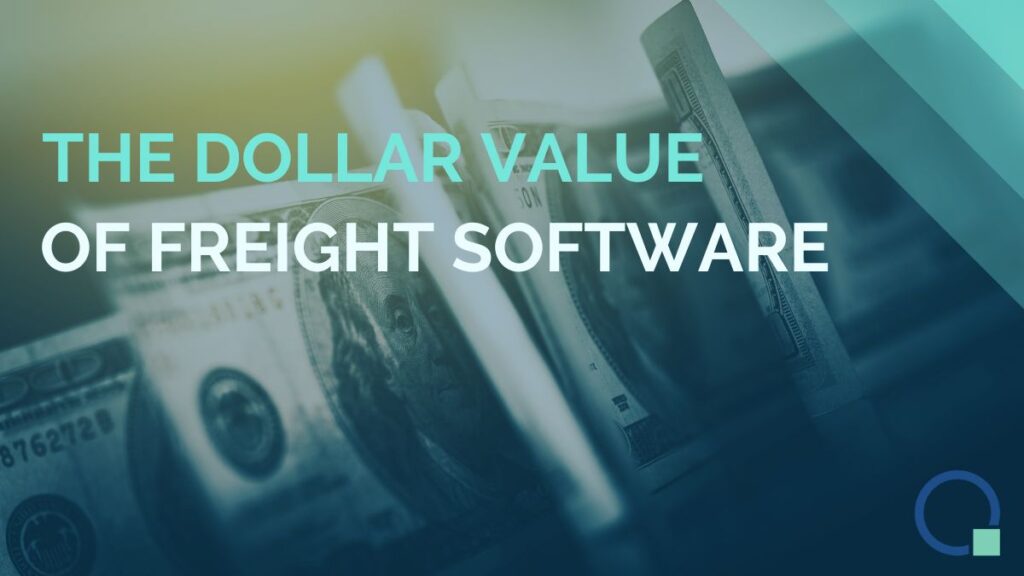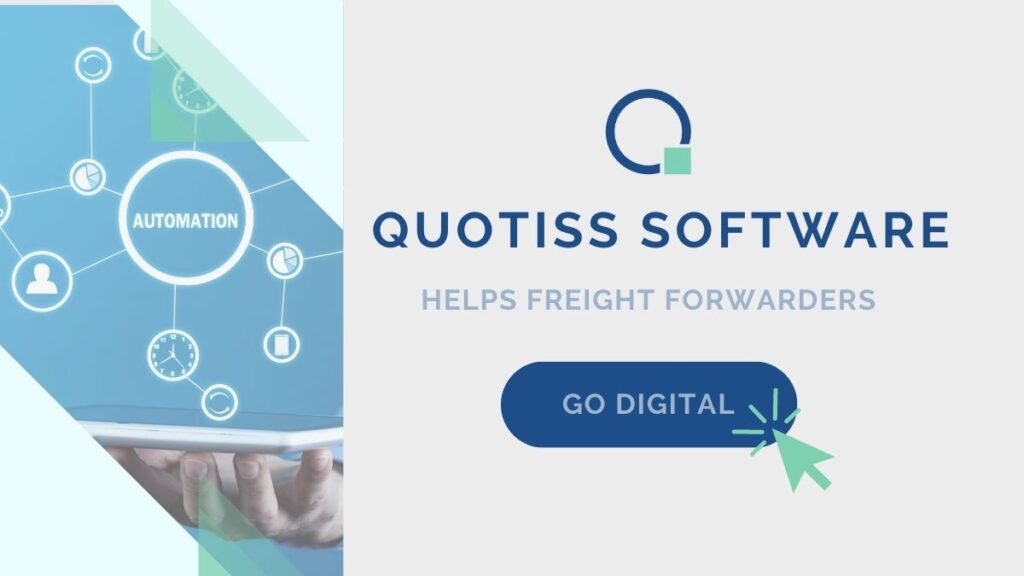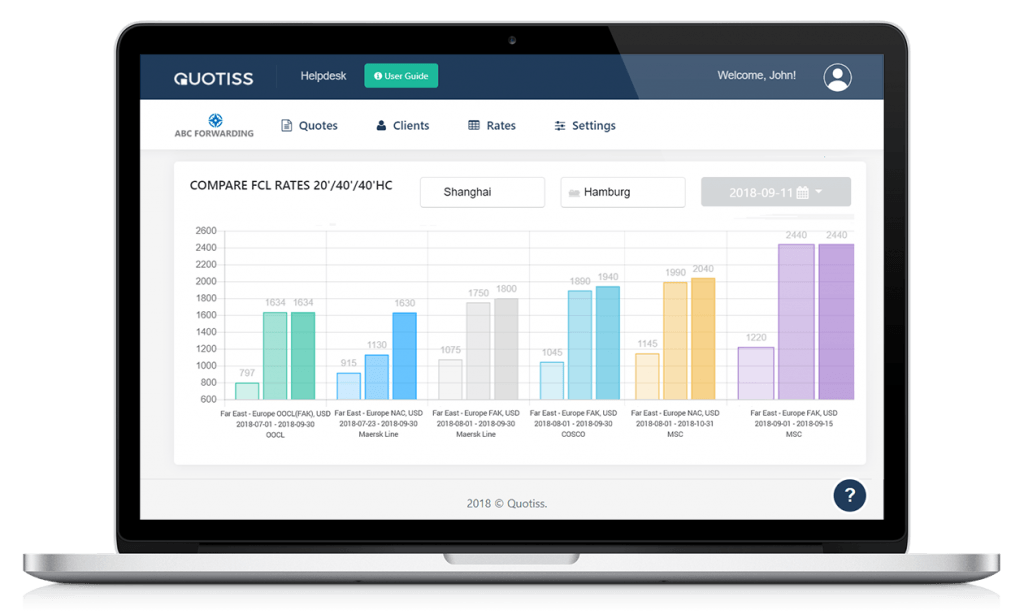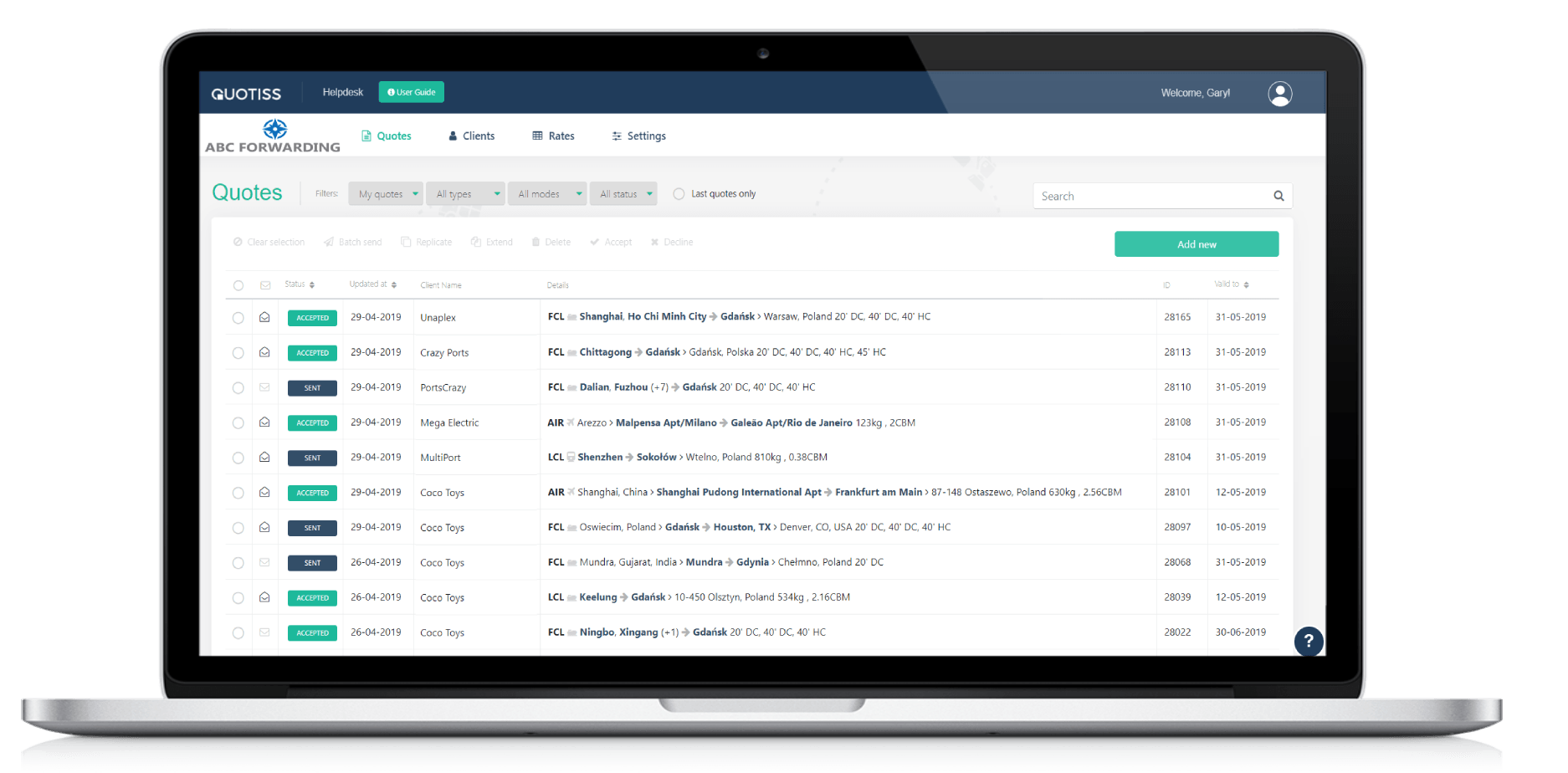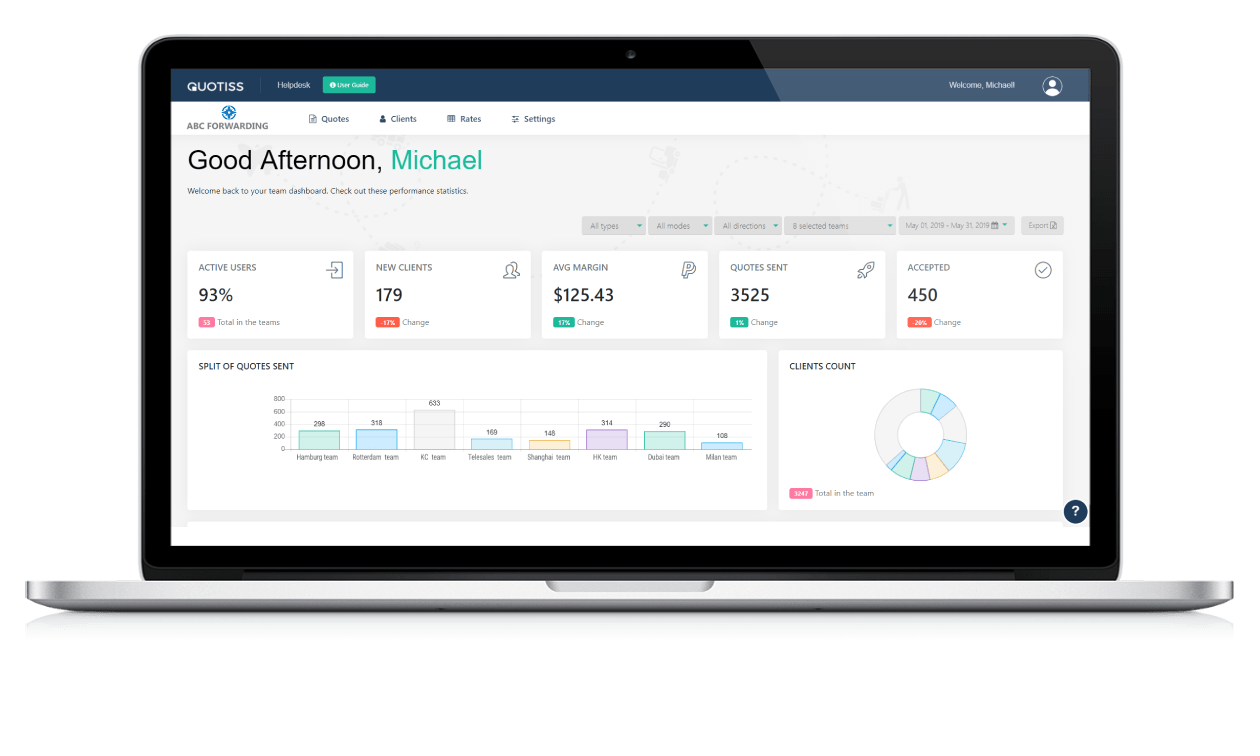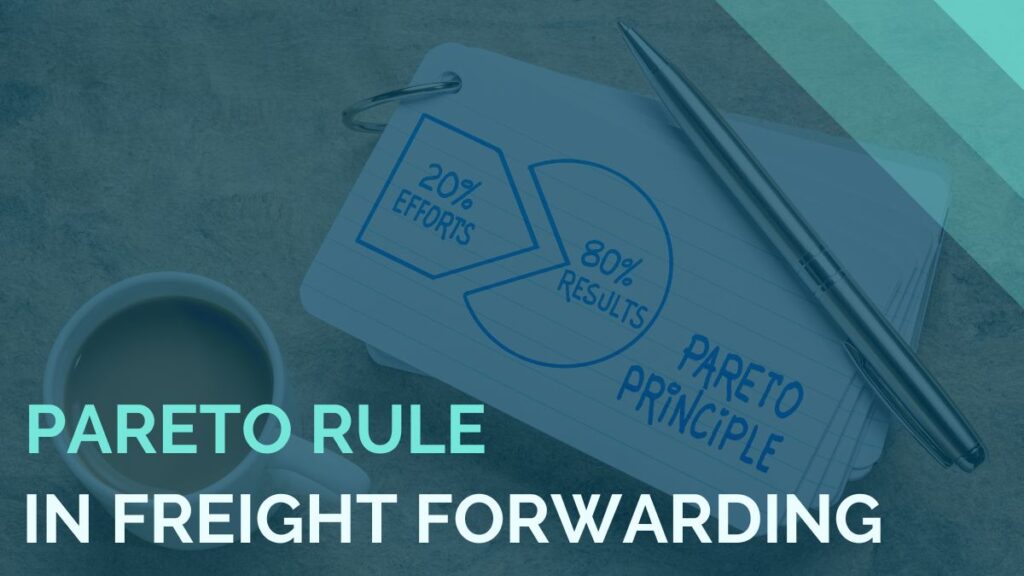How to Boost Sales in Freight Forwarding?
How are you doing with delivering on your sales targets this month, this quarter, or this year? No matter what is the current status of your sales pipeline, it’s essential to fill it up with the business opportunities on a regular basis.
Most opportunities in freight forwarding start with a freight quote request. Quoting freight rates can be a devastating experience for the sales team because the effort is rarely rewarded with the actual booking placed by a client. In fact, according to the industry statistics, on every 100 quotes sent, there is a 5%-10% chance of marking that deal as ‘Closed-Won’. No wonder, salespeople are so depressed by this routine task.
There are 2 solutions to this problem:
- Make the freight rates irresistibly low and boost you win ratio – obviously, not too healthy for the bottom line results;
- Fix the quoting process and make it effortless (even enjoyable!) for the salespeople.
Keep Your Sales People Motivated
A good salesperson is golden for any business, and it is especially true for the traditional, relationship-driven freight forwarding. These special relationships bring enormous value when it comes to keeping customers loyal and satisfied. Great salespeople love business development, but they hate the administrative work. Making the routine tasks easy for them will boost their performance, and as a result – will increase sales.
Keep Your Customers Satisfied
How long do your clients wait for freight rates? Just being faster than your competitor may help to get the deal closed. Sometimes, rate requests from potential clients are left unanswered just because it takes so much time to prepare and send a quote. To keep your customers loyal and satisfied, you need to make their work and life easier. Responding faster with the perfectly tailored freight quote, which contains all necessary information for the decision-making, will definitely help to achieve customer success.
Keep Your Management Informed
There is a lot of frustration in the freight forwarding business caused by the limited access to the information. It is very difficult for the management team to know how many freight quotes have been sent to the clients today, this week, or this month. And nearly impossible to analyze freight margins inside those quotes. Instead of relying on unstructured and often biased data, sales managers should be able to monitor their sales teams’ performance in real-time – this way they can be more proactive and secure more deals.
Get an Extra Sales Boost
Quotiss is a sales automation software for freight forwarders. It enables your sales team to generate perfect custom-made freight quotes in seconds. Quotes are emailed to your customers directly from the system and synced with your company email server.
On top of quoting automation, Quotiss has much more to offer:
- Quotiss simplifies and automates carrier contract management for procurement teams,
- Quotiss stores your most accurate database of customers and prospects,
- Quotiss builds client history with a full archive of sent quotes,
- Quotiss provides extensive sales analytics,
- Quotiss automates marketing and communication,
- Quotiss ensures all freight quotes are made in a unique company format and design,
- Quotiss makes it extremely easy to handover clients internally and onboard new salespeople in the organization.
Moreover, it’s very intuitive – it takes just 1,5 hours of training, and salespeople can start using it immediately.
Contact us today and learn how Quotiss can help you boost your sales!

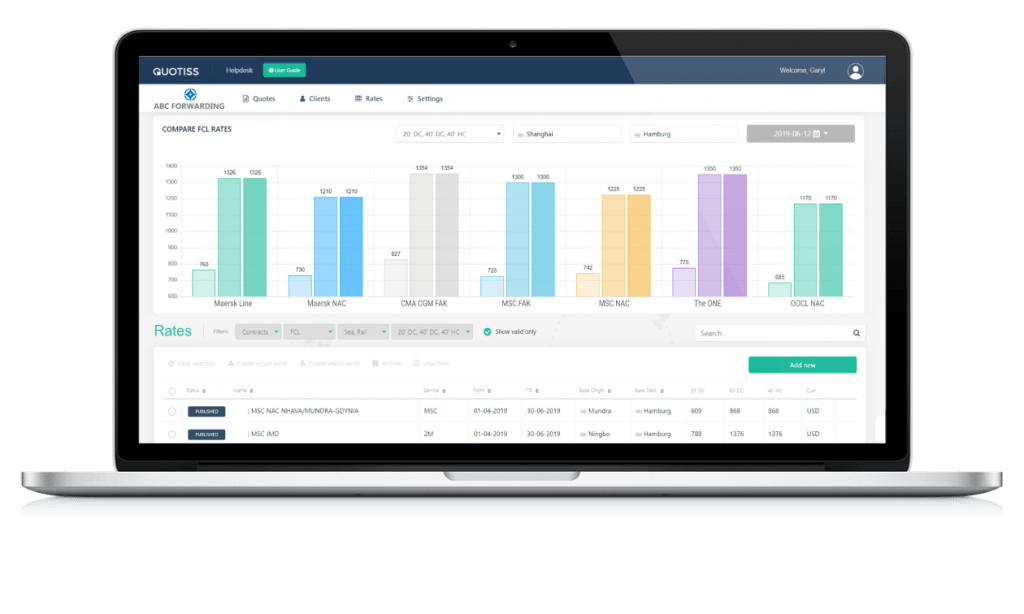
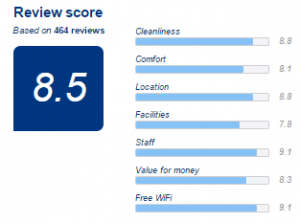 Most likely, first, you will go to an online platform that offers a selection of deals. Then you would apply some filters to define search criteria. The most common criteria would be price, location, and convenience (in the order of your personal preference). Once you have a shortlist, you’ll definitely look at the reviews before making the final decision.
Most likely, first, you will go to an online platform that offers a selection of deals. Then you would apply some filters to define search criteria. The most common criteria would be price, location, and convenience (in the order of your personal preference). Once you have a shortlist, you’ll definitely look at the reviews before making the final decision.


